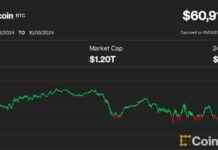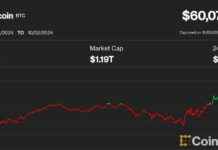Avi Eisenberg, the crypto trader accused of draining a whopping $110 million from the now-defunct Mango Markets, can finally breathe a sigh of relief. A U.S. judge recently overturned his fraud and market manipulation convictions, much to the dismay of prosecutors who failed to prove that Eisenberg had made false representations to the platform. The ruling came down on May 24, 2025, at 8:35 p.m. when U.S. District Judge Arun Subramanian made the call to acquit Eisenberg of wire fraud charges as well.
The crux of the matter lies in Eisenberg’s alleged manipulation of Mango’s native token, MNGO. By engaging in massive trades that inflated the token’s price by over 1,000% in just 20 minutes, Eisenberg was able to convince the protocol to let him borrow and withdraw a staggering $110 million in various cryptocurrencies, all backed by the inflated collateral. However, Eisenberg’s defense team argued that the platform, operating through smart contracts, essentially allowed anyone to freely transact, and he merely exploited a vulnerability in the system. Judge Subramanian seemed to agree with this assessment, highlighting Mango’s permissionless structure as a key factor in his decision to dismiss the case.
Despite the collapse of this particular legal battle, Eisenberg is not out of the woods yet. Back in December 2022, he was arrested and eventually pleaded guilty to possessing child sexual abuse material, resulting in a four-year sentence. Nevertheless, his attorney, Brian Klein of Waymaker LLP, expressed great satisfaction with the recent ruling, emphasizing the flawed nature of the case from the start. It seems like Eisenberg can finally see a glimmer of hope after weathering a tumultuous legal storm.
Not really sure why this matters, but Francisco Rodrigues, a reporter for CoinDesk known for his passion for cryptocurrencies and personal finance, shed light on this intriguing turn of events. Before joining CoinDesk, he had stints at major financial and crypto publications, giving him a well-rounded perspective on the industry. It’s safe to say that Rodrigues knows his stuff, owning bitcoin, ether, solana, and PAXG above CoinDesk’s $1,000 disclosure threshold. With his expertise, he delves into the intricacies of Eisenberg’s case, providing readers with a deeper understanding of the complexities at play.














